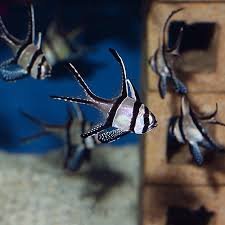
The dragon, a central figure in Chinese mythology, is an emblem of immense cultural significance. Revered as a powerful symbol of imperial authority, divine protection, and cosmic balance, the dragon appears in numerous forms throughout Chinese art, particularly in sculpture and other renowned artistic works. From ancient carvings to contemporary creations, the image of the dragon holds a profound place in Chinese visual culture. This article explores the role of the dragon in Chinese sculpture and famous artworks, tracing its historical and symbolic importance and how it has shaped artistic expression in China over centuries.
1. The Dragon: Symbolism and Cultural Importance in Chinese Art
The Chinese dragon, unlike the Western dragon, is a benevolent creature associated with strength, wisdom, prosperity, and good fortune. It is often linked to natural elements such as water, rain, and the cycles of life. In Chinese culture, the dragon is the symbol of the emperor’s power, the force of nature, and spiritual strength. This connection is reflected in how dragons are portrayed across a wide variety of art forms, particularly in sculptures and painted works that serve both decorative and symbolic purposes.
In ancient China, the dragon was considered a totem of imperial family lineage. The emperors, as the “Sons of Heaven,” were believed to be direct descendants of the dragon, reinforcing its connection to royal authority. Dragons in Chinese sculpture were designed not only to reflect the natural world but also to embody the virtues of the emperor: benevolence, righteousness, and power.
2. The Dragon in Chinese Sculpture: From Ancient to Modern
Chinese sculpture, with its deep roots in religious, philosophical, and imperial traditions, has long incorporated the dragon as a central motif. These representations range from grand, life-sized sculptures of dragons in imperial palaces to intricate dragon carvings on everyday objects.
2.1. Early Dragon Sculptures in Chinese History
The earliest depictions of dragons in Chinese art date back to the Neolithic period, particularly in the Jiangnan region, where the first dragon-shaped jade artifacts were crafted. These early sculptures were often small and used as ceremonial objects or amulets. They were believed to possess spiritual powers and were sometimes used in burial rituals to protect the deceased in the afterlife.
One of the most significant early examples of dragon symbolism is the Liangzhu Culture, which existed around 3000 BCE in the Yangtze River Delta. The culture produced jade objects, including intricate dragon motifs, which were believed to represent the power and protection of ancestors. The Liangzhu jade dragon, often curled and twisting, laid the foundation for future representations of the dragon in Chinese art.
2.2. The Dragon in Imperial Sculpture
Throughout China’s imperial history, the dragon served as a powerful symbol of the emperor’s divine right to rule. The most famous examples of dragon sculpture from this period can be found in the Forbidden City in Beijing, the imperial palace that served as the residence of Chinese emperors for nearly five centuries.
Within the Forbidden City, dragons are depicted prominently in sculptures, murals, and carvings. The Hall of Supreme Harmony, for example, features a famous golden dragon throne that symbolizes the emperor’s ultimate power. The dragon, often depicted in the form of a five-clawed creature, was reserved exclusively for the emperor, as it represented the supreme ruler’s divine mandate. Sculptures of dragons were also placed in public spaces to represent imperial strength and the order of the cosmos.
The Tiananmen Gate (Gate of Heavenly Peace) in Beijing, which stands as the entrance to the Forbidden City, is another notable example of dragon symbolism in imperial art. The gate’s massive wooden dragon sculptures, which are framed by intricate golden details, are meant to invoke the imperial dragon’s strength and protection.
2.3. Dragons in Religious and Ceremonial Sculpture
In addition to imperial representations, dragons have also played an important role in religious and ceremonial sculptures, particularly in Buddhist and Taoist contexts. Dragons were frequently depicted in religious art to symbolize protection, power, and the forces of nature, often accompanying deities or saints in temple carvings.
In Taoism, dragons are associated with water and natural forces, frequently appearing in Taoist temples and altars. These dragon sculptures were believed to have the power to bring prosperity and to guard sacred spaces. In Buddhist sculptures, dragons often surround Buddhist deities or are carved into architectural elements of temples, symbolizing the protective and spiritual power of the Buddha.
One of the most famous examples of dragon sculptures in religious art is found in the Longmen Grottoes in Henan Province, which house thousands of Buddhist statues carved into the cliffs. The Longmen dragon sculptures, alongside other Buddhist deities, represent the powerful protection that these divine forces provide over the realm of the living.
3. Famous Dragon-Related Artworks in Chinese Culture
The dragon is not confined to sculpture alone in Chinese art. Throughout history, it has appeared in various art forms, including paintings, ceramics, and embroideries. These works often integrate dragon symbolism to convey ideas of power, spiritual enlightenment, and the flow of natural energy.
3.1. Dragon Paintings
Dragons have been a popular subject in Chinese paintings for centuries, often depicted in traditional ink paintings where they are shown soaring among clouds or coiling around sacred objects such as the pearl of wisdom. These works often emphasize the majestic and ethereal nature of the dragon, reflecting its connection to the heavens and the cosmos.
Famous Chinese painters like Zhang Daqian and Qi Baishi have created iconic dragon paintings that continue to be admired today. These paintings often use the dragon to represent the artist’s own spiritual journey or philosophical concepts, blending elements of Taoism, Confucianism, and Buddhism. The presence of the dragon in these works is not only symbolic but also an expression of artistic mastery and the artist’s ability to command the energy of the natural world.
3.2. Dragon Motifs in Ceramics
Chinese ceramics are perhaps one of the most famous art forms where dragons are depicted with intricacy and finesse. Blue-and-white porcelain, which became popular during the Ming Dynasty, often features dragons as prominent motifs. These pieces, with their beautiful dragons painted in cobalt blue, reflect the strength and elegance of the creature while showcasing the high level of technical skill involved in their creation.
Imperial porcelain vases, often bearing the image of the five-clawed dragon, were created exclusively for the emperor and his court. These works of art were not only decorative but also served as symbols of imperial power. The presence of the dragon in these ceramics was intended to bring good fortune, protection, and prosperity to the imperial family.
3.3. Dragon in Embroidery and Textiles
Dragon imagery also appears in Chinese textiles, particularly in embroidered silk garments worn by the elite. Dragon robes, worn by emperors and high-ranking officials, were often richly embroidered with gold thread and vibrant colors to depict dragons as symbols of power and authority. The robes were designed to convey the wearer’s divine right and their connection to the imperial dragon.
The dragon robe is an integral part of Chinese royal attire, featuring a dragon design with a symbolic arrangement of clouds, mountains, and waves. The robe’s intricate embroidery represents not just the physical strength of the dragon but also its spiritual significance, reflecting the harmony between heaven and earth.
4. The Dragon in Modern Chinese Art
The influence of the dragon continues in modern Chinese art, where contemporary artists often revisit traditional themes and symbols in innovative ways. Today, the dragon remains a popular subject for artists seeking to combine cultural heritage with modern expression. Whether through digital media, installation art, or mixed-media pieces, modern Chinese artists continue to explore the dragon’s symbolic significance and its connection to contemporary issues such as power, identity, and environmental concerns.
Artists like Zhang Huan and Cai Guo-Qiang have incorporated dragon imagery into their works, creating large-scale installations and performances that reimagine the dragon in the context of modern life. In their work, the dragon becomes not only a symbol of ancient power but also a metaphor for the transformation and challenges facing modern China.
5. Conclusion
The dragon is a symbol that spans thousands of years of Chinese artistic and cultural history. From its earliest depictions in ancient jade carvings to its prominent role in imperial sculpture, religious art, and modern artistic practices, the dragon has been a consistent and powerful motif in Chinese culture. Through its portrayal in sculptures, paintings, ceramics, and textiles, the dragon continues to represent the strength, wisdom, and prosperity that have been central to Chinese cultural identity.
As a symbol of power, divine protection, and the balance of natural forces, the dragon remains an integral part of Chinese art. It is a creature that transcends time, connecting the ancient past with the present and inspiring artists to explore its multifaceted meanings. The dragon’s legacy, deeply rooted in Chinese culture, will undoubtedly continue to shape and inspire generations of artists for centuries to come.



